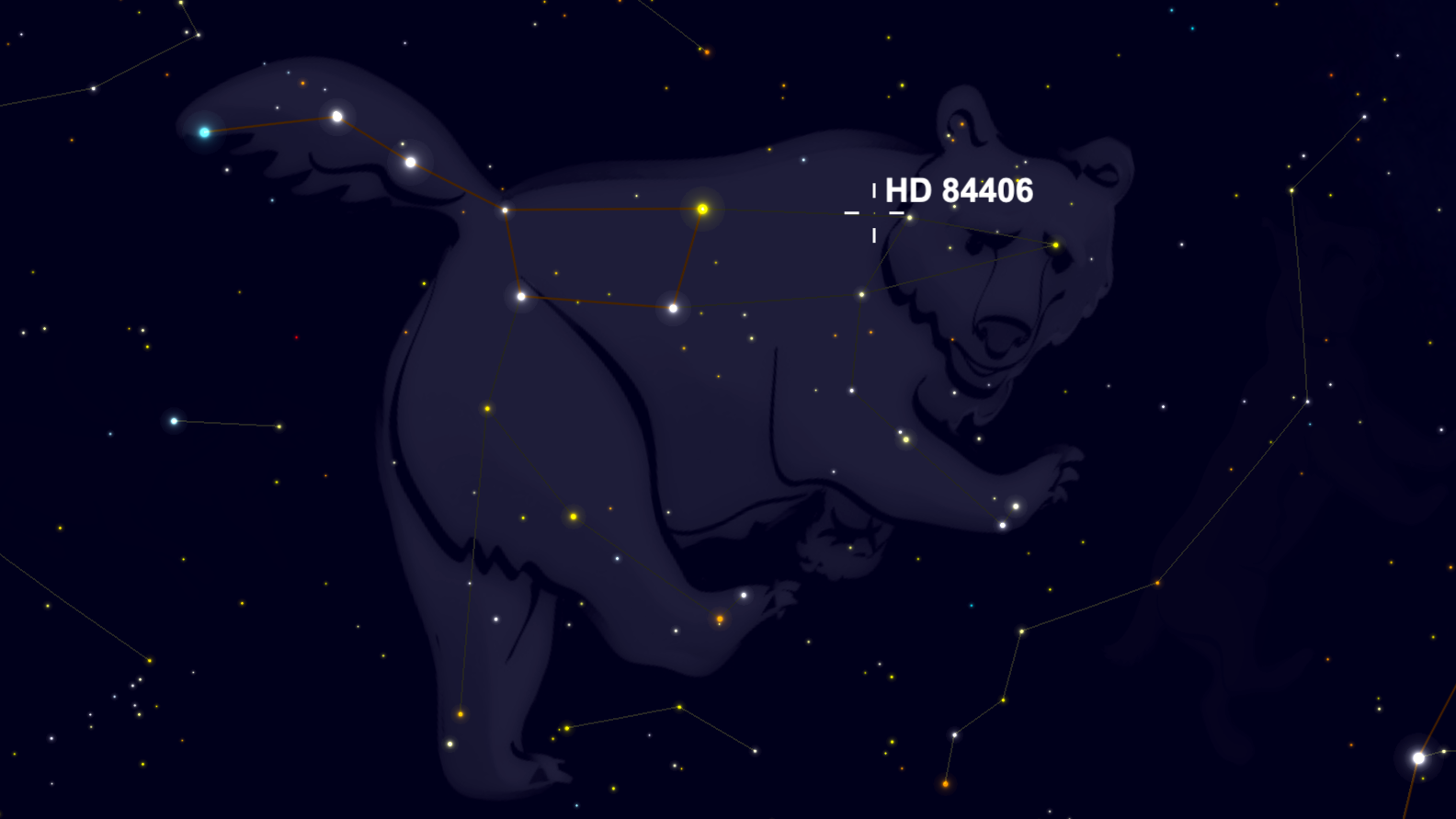The trans-Neptunian dwarf planet Eris is tidally locked to its small moon Dysnomia. Recently obtained bounds on the mass of Dysnomia demonstrate that Eris must be unexpectedly dissipative (‘squishy’) for it to have despun over the age of the Solar System. New research shows that Eris must have differentiated into an ice shell and rocky core to explain the dissipation.
An artist’s impression of the dwarf planet Eris (in the distance) and its moon Dysmonia. Image credit: ESO / L. Calçada / Nick Risinger, skysurvey.org.
Eris was discovered in January 2005 by Caltech astronomer Michael Brown and colleagues at Palomar Observatory.
The dwarf planet is roughly 2,300 km (1,445 miles) in diameter, has a mass of 0.28% that of Earth and 27% greater than that of Pluto.
Eris has an orbital period of 559 years. Its maximum possible distance from the Sun is 97.5 AU (astronomical units), and its closest is 38 AU.
Unlike its cousin Pluto, which was explored by NASA’s New Horizons spacecraft and revealed a dynamic and variegated world, only these basic characteristics of Eris are available.
In particular, its internal structure, for instance, whether it consists of a homogeneous rock-ice mixture or not, is unknown.
“The first important clue is that Eris and its moon, Dysnomia, always face the same way toward each other,” said University of California, Santa Cruz Professor Francis Nimmo.
“That happens because the big planet gets spun down by the tides that the little moon raises on it. The bigger the moon is, the faster the planet spins down.”
Researchers can use the spin and orbital characteristics of planets and their moons to infer properties of their internal structures. But until recently, they did not have an estimate for the size of Dysnomia.
The new data from the Atacama Large Millimeter/Submillimeter Array (ALMA) changed that by revealing that Eris’ moon must be below a certain mass (mass ratio 0.0084 at 1-σ and 0.015 at 3-σ). This upper limit on mass provided the second crucial piece of information.
“And so as soon as you know that, then you can actually start to do real calculations,” Professor Nimmo said.
This image, taken with the NASA/ESA Hubble Space Telescope on August 30, 2006, shows the dwarf planet Eris (center) and its moon Dysnomia. Image credit: NASA / ESA / M. Brown, California Institute of Technology.
The main, unexpected result of the model is that Eris is surprisingly dissipative.
Professor Nimmo and Professor Brown determined that Eris has a rocky core surrounded by a layer of ice.
This outer shell of ice is likely convecting, unlike the conducting shell of Pluto.
“The rock contains radioactive elements, and those produce heat. And then that heat has to get out somehow,” Professor Nimmo said.
“So as the heat escapes, it drives this slow churning in the ice.”
“Eris therefore behaves less like a rigid object and more like a soft cheese or something like that. It has a tendency to flow a bit.”
Additional data about the shape of Eris will help verify the model Professor Nimmo and Professor Brown created.
“We make the point that Eris should be pretty smooth because if there’s any surface topography, the ice is going to flow and that topography will go away,” Professor Nimmo said.
“So it would be nice to get some measurements of what shape Eris is because if it’s very irregular, that would not agree with our model.”
Eris is so distant from Earth that it shows up as a single pixel, so in order to reconstruct its shape, scientists will need to watch the planet pass in front of stars.
“The star blinks out and then the star comes back, and that tells you how wide Eris is at that point. And if you do that with a whole bunch of stars, then you can actually reconstruct shape,” Professor Nimmo said.
“I’m hoping people are actually doing it, I just don’t know whether they are.”
The results were published in the journal Science Advances.
_____
Francis Nimmo & Michael E. Brown. 2023. The internal structure of Eris inferred from its spin and orbit evolution. Science Advances 9 (46); doi: 10.1126/sciadv.adi9201
Note: This article have been indexed to our site. We do not claim legitimacy, ownership or copyright of any of the content above. To see the article at original source Click Here














